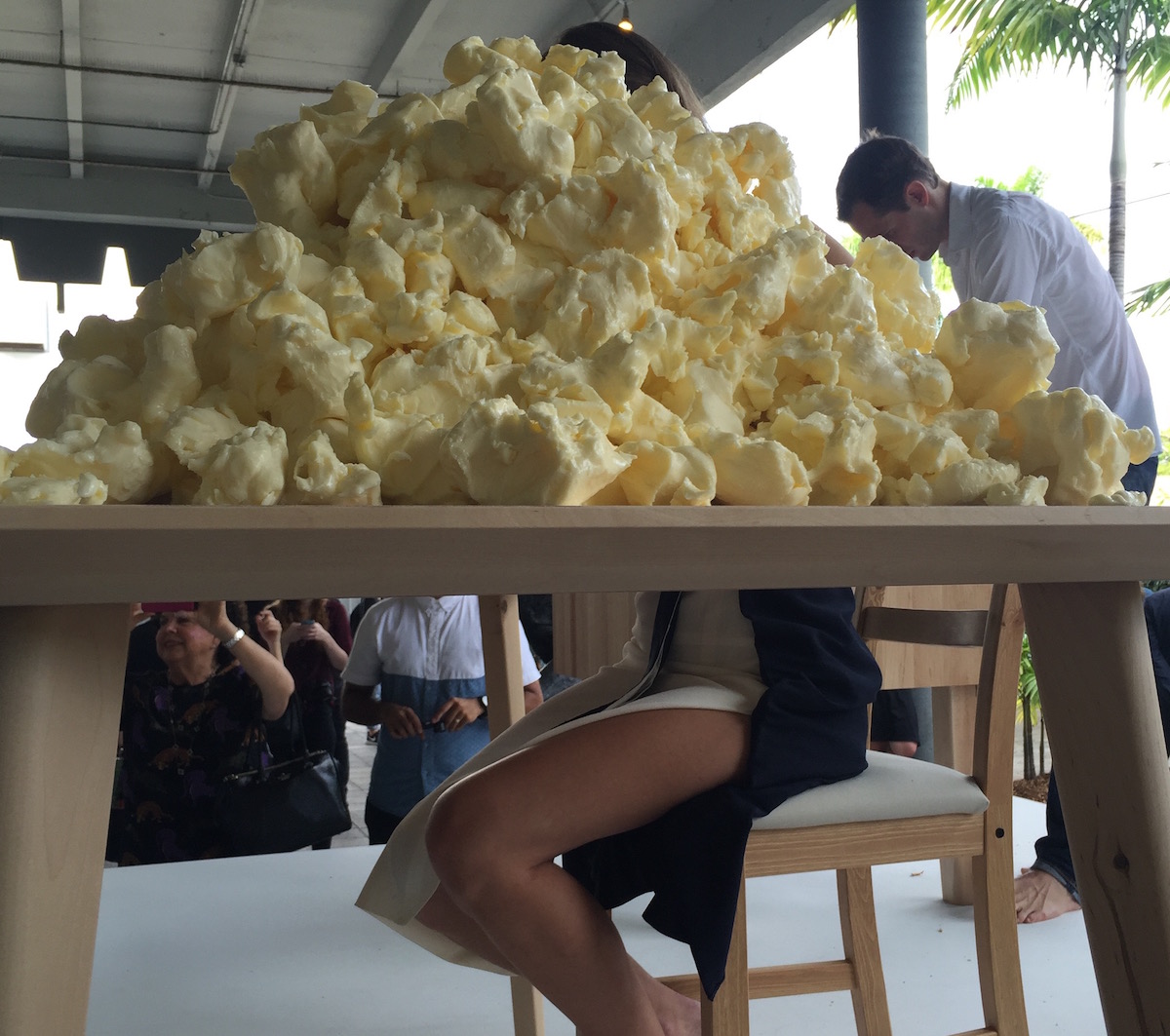The Vesper Project at the American University Creates a Physical Opportunity to Inhabit Mental Illness
by Mike Iacovone
In an exhibit at Yale, a man named Benjamin Vesper attacked one of Titus Kaphar’s paintings under the duress of a psychotic breakdown. Vesper was admitted to a psychiatric hospital, and through treatment started to reveal his past to the doctors. He also wrote letters to Kaphar, which can be read here.
The one-sided correspondence is a wild ride through the conscience of a man who has a shaky and paranoid hold on reality, and they are absolutely, voyeuristically captivating. Instead of reacting against Vesper’s actions, Kaphar engaged him in written conversation. Vesper’s letters are meandering rants of a man struggling with the loss of his own identity.
In one of the letters Vesper does his best to explain the attack brought on by Kaphar’s painting –
“Then the painting I’m looking at reaches out and takes hold of me
Like the day the Indian Ocean woke up and decided to claim several thousand souls
I realize now that it was a trap
The lure was well placed
Just around a corner so I couldn’t see it coming
Maybe it called to me
I can’t say for sure now
But once I was in front of it I felt so alone.”
Kaphar used these letters as the impetus of a five-year study that resulted in a large, immersive installation. Although the artist and Vesper might seem like they have little in common, Kaphar found connections with Vesper because he was also struggling with the disparities in his own childhood memories, and realizing that they were less than true.
From the Vesper Project website Kaphar explains, “Several years ago, I started a portrait of my aunt with the intention of placing her into an 18th century composition. As I was studying her features from a photograph, I realized that I had memories of her that simply did not make sense. The longer I painted, the more I realized that I had compiled years of memories of her that were geographical and historical impossibilities. After contacting my family for confirmation, they verified that she couldn’t have been present at the times and places I distinctly remembered her being.”
Titus Kaphar’s The Vesper Project, on view at the Katzen Arts Center at American University through December 13th, was inspired by Vesper’s paranoid letters and manifests them physically into an installation depicting two conjoined rooms of a 19th century home where a massive tragedy has occurred.
As you walk into the massive environment in adjoining rooms constructed in the AU Gallery, you find yourself suddenly trespassing into the abandoned home of a fictionalized 19th Century New England family. Based on Vesper’s family story and correspondence with the artist, the family was light skinned enough to pass for white, but their mixed heritage made them “Negro” according to the law. After some unfortunate events involving a daughter’s failed engagement and some business deals that went bad, their lives and secrets begin to unravel and the ensuing chaos shatters the family and undermines the social status the father worked so hard to achieve.
The two rooms are built from old beams, planks and boards, and there is faint smell of an old attic. Dusty furniture, an old typewriter, a broken wall clock and some wooden tables decorate what would have been an elegant sitting room, but has been repurposed into a sequestered hide out. The second room has a rift cracking through the floor and walls resembling an earthquake, which reference a breakdown. A tree branch is wedged halfway through the broken wall, tethered by multiple ropes pulling it in, or possibly preventing its escape. There is a fireplace that is blocked by boards haphazardly nailed to it, and this too leaves you wondering if it’s meant to block an exit or entrance. These fictional records of human action give all indications of strife and unrest, yet Kaphar manages to keep sentimentality and nostalgia out of the equation, an amazing task for someone who had such a personal experience with the subject.
The installation services both the fictional and true stories by broadly displaying the tension and hopelessness of someone suffering. While the rooms are falling apart, cracked and disjointed, it does not communicate neglect or entropy, a slow disintegration over time. Instead it explodes like a personal catastrophe. Kaphar marks the time by repurposing the artifacts, dismantling the decor, and obfuscating history by covering the walls with old newspapers. This presents that someone was struggling with the outside world and their own memories of it.
The walls are covered in old New England newspapers from the 1800’s and early 1900’s, which felt as if someone was trying to add layers to a mask. Among the old newspapers plastered to the wall I found a page from the literary journal Brother Jonathan, 1842 edition, that read: “The romance of the ocean is over. No narrative of recent events give off half the wild interest that was once impaired by the relations of sailors returned from their ordinary voyages.”
Although the newsprint appears to be pasted to the wall randomly, it’s doubtful that any of this Kaphar-curated chaos is accidental. The function of these two rooms, giving us window into a fractured reality, doesn’t sensationalize viewers by leaning too far towards a haunted house effect. Instead it draws you in, and allows you to relate physically, emotionally, and personally to the struggle of identity and loss of a proxy family whose past, like that of our nation as a whole, is muddled by differing versions of memory and history.
Author Michael Dax Iacovone is a DC based artist who works in photo, video, maps and installation.
The Vesper Project will be on exhibit at The Katzen Center at AU through December 13, 2015










